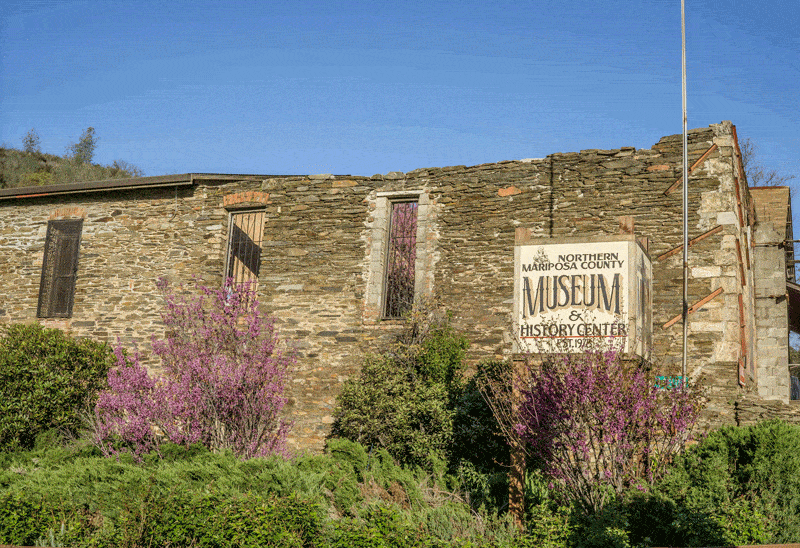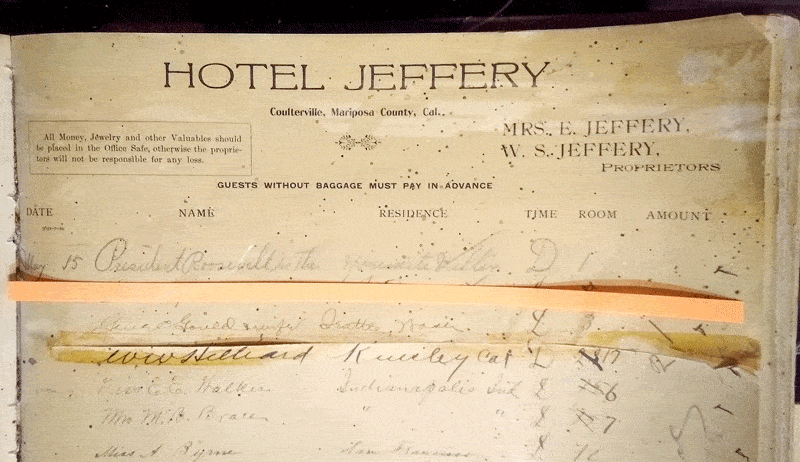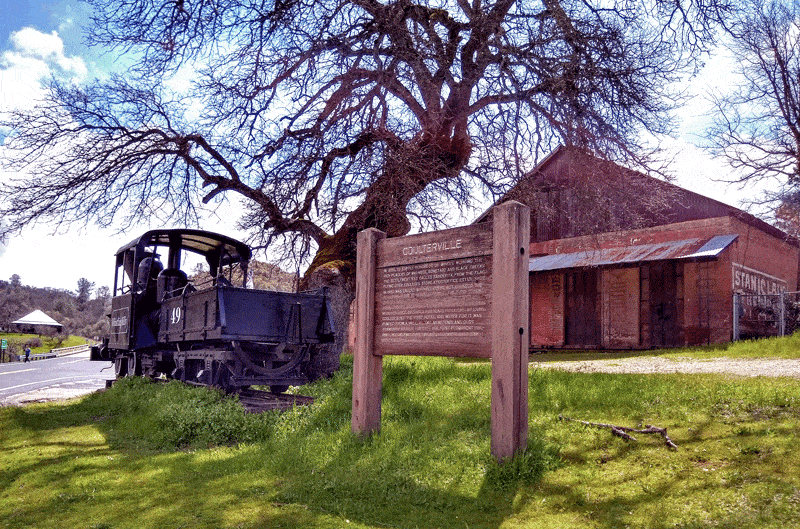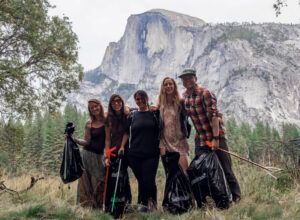by Willow Polson
If you’re seeking an authentic view into the California Gold Rush era, Coulterville, Ca., remains a treasure trove of preserved architecture reflecting the lives of early Californian settlers and Native American Communities. The entire town has been designated as a California historic district, and no building tells the story of this mining town’s heritage better than the Northern Mariposa County History Center (NMCHC).
The Northern Mariposa County History Center offers an immersive journey through Yosemite region history and the events that shaped this pioneer community. Take a look at our video below to see and hear what the Northern Mariposa County History Center is all about.
Striking it Rich: California Gold Rush History

More than just a museum, the Northern Mariposa County History Center is a living portal into gold mining exhibits, personal stories, and authentic Gold Rush artifacts that reveal how mining pioneers and settlers thrived here in the late 19th century. Locally curated and community-supported, the NMCHC illuminates what life was like in Coulterville during the boom, and how many pioneer families still reside here today.
Muir, a famous naturalist, and advocate for Yosemite National Park in the early 20th century, would have walked right past what is now the History Center on his journeys to and from Yosemite, and could have even shopped at McCarthy’s store on the same site. The stone remains of the Coulterville Hotel form the museum’s entry courtyard, with the museum itself nestled inside the Wells Fargo and McCarthy’s store building.
Northern Mariposa County History Center
The museum resides within the stone remains of historic structures like the Coulterville Hotel and McCarthy’s Store. Inside, detailed models and historic artifacts of the 19th century recreate a vivid picture of daily life and the challenges of the Gold Rush.
Fires were a common threat during the California gold rush era, with Coulterville suffering multiple devastations. Surviving stone and adobe buildings stand today, offering an ideal setting for historical walking tours. Pick up a walking tour map at the museum to ensure you don’t miss any hidden treasures.
Among these is the Sun Sun Wo store, part of Coulterville’s former Chinatown district. The museum showcases original ledger books, scales, and other items highlighting the community’s cultural diversity. Some artifacts are still being translated, connecting modern visitors to the lives of those who once called this region home.

Family stories are central to NMCHC exhibits, with displays featuring personal belongings, photos, and keepsakes passed down through generations. Step into a Victorian parlor setting and discover how families from various backgrounds — Italian, French, Irish, and Sierra Miwuk Native American — helped shape the community’s unique identity.
Outside, you’ll find “Whistling Billy,” a small steam engine that once hauled ore from local mines, parked beneath the original town Hanging Tree. This photogenic spot links today’s travelers to the early California settlers who toiled in these hills.

H3: Parking and Directions
Parking at the NMCHC is free and easily accessible, with room for RVs. Disabled access is available via a ramp at the back. Consider supporting this volunteer-run, non-profit museum by leaving a donation after your visit.
Visitors can reach Coulterville via Highway 49 (the “Golden Chain” highway) or Highway 132, recently designated the John Muir Historic Route.
Coulterville: Nostalgia Beyond its Gold Rush History
The museum continues to grow and evolve. A recent donation from the Barrett family brought historical store contents into the NMCHC’s collection. Restoration efforts are underway, and future exhibits will offer even deeper insights into the region’s authentic Gold Rush artifacts and heritage.
As you follow in Muir’s footsteps up Main Street, take time to explore the variety of shops inside the historic buildings and have a bite at one of the restaurants, which feature comfort foods like burgers, vegan and paleo fare, and pet-friendly outdoor dining. in the last 150-years, this California Gold Rush Boomtown has not changed much. The streets are paved, but walking the sidewalks is like taking a trip back in time as you imagine miners and cowboys making their way in and out of shops and saloons.
For even more Yosemite region history, visit the pioneer cemetery or time your trip for late September to experience CoyoteFest.




